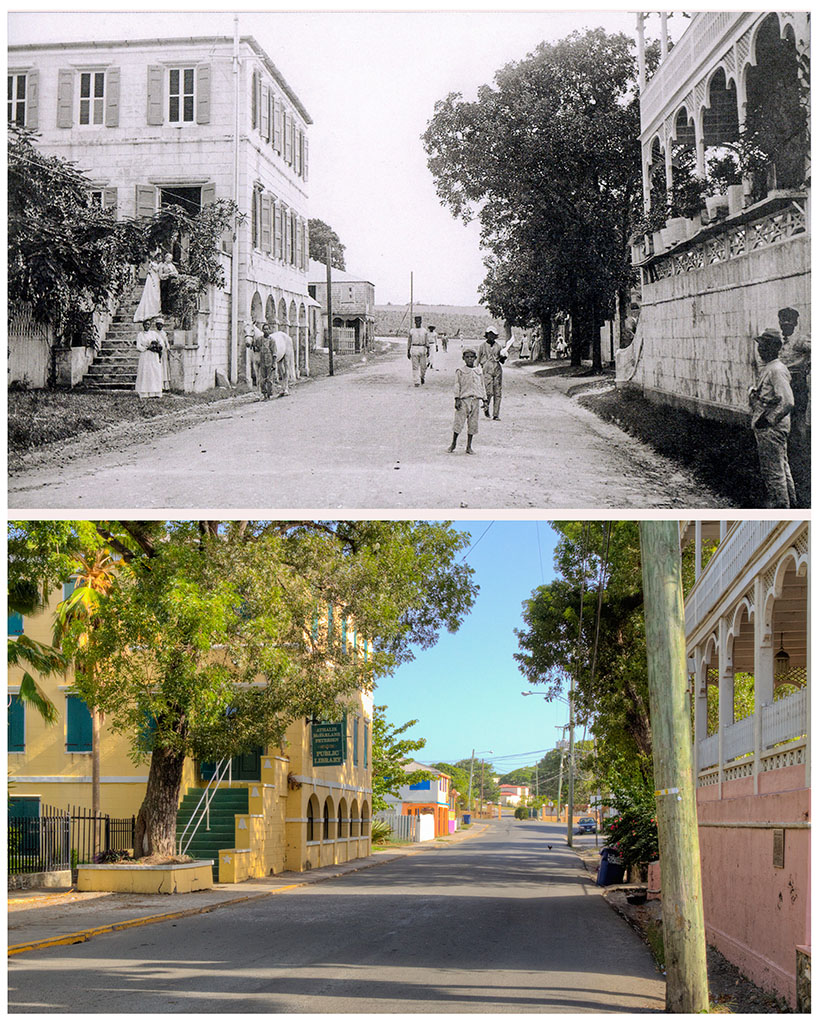Then & Now
A collection of photos from Danish St. Croix, juxtaposed to modern day recreations

Frederiksted Anglican Church

Frederiksted Customs House

Little La Grange (Lawaetz Museum)

Frederiksted Library

Christiansted Government House

Frederiksted Hospital

Diamond Ketura Sugar Windmill

Frederiksted Cargo Crane
Many years ago, I was given a set of images taken around 1911, purportedly by the wife of the then Danish police chief, who had taken up the new hobby of photography. Glass plate photography began in the 1850’s but it wasn’t popular until the 1870’s. The camera itself was largely made of wood and was quite bulky. It had a bellows that allowed for adjustments in focus, and the lens assembly could be tilted and moved up and down, and side to side, to bring the image back to the center of the image plane. This is referred to as “tilt and shift”. It allows for the magnification of the lens to vary across the image plane thus creating or compensating for perspective or “keystone distortion” (buildings leaning backwards). The photographer took great advantage of this capability and did it very well. While tilt and shift lenses are available for modern film cameras, with digital photography, it is common to use programs like Photoshop to warp the image in post processing, not in the camera. In trying to recreate the images for the concept of “Then and Now” the greatest issue I faced was recreating where the photographer stood to take the picture. For example, with the picture of the Frederiksted Hospital, the photographer had been standing on the beach but the waterfront has now been built and the grade elevated – even laying my camera on the ground it was still significantly above where the original had been taken; for the Frederiksted Library, I had to place my tripod in the middle of the road. For the Anglican church, a building now stands where the photographer stood. These are just a few from the project. Overall, it was just fun to do.
